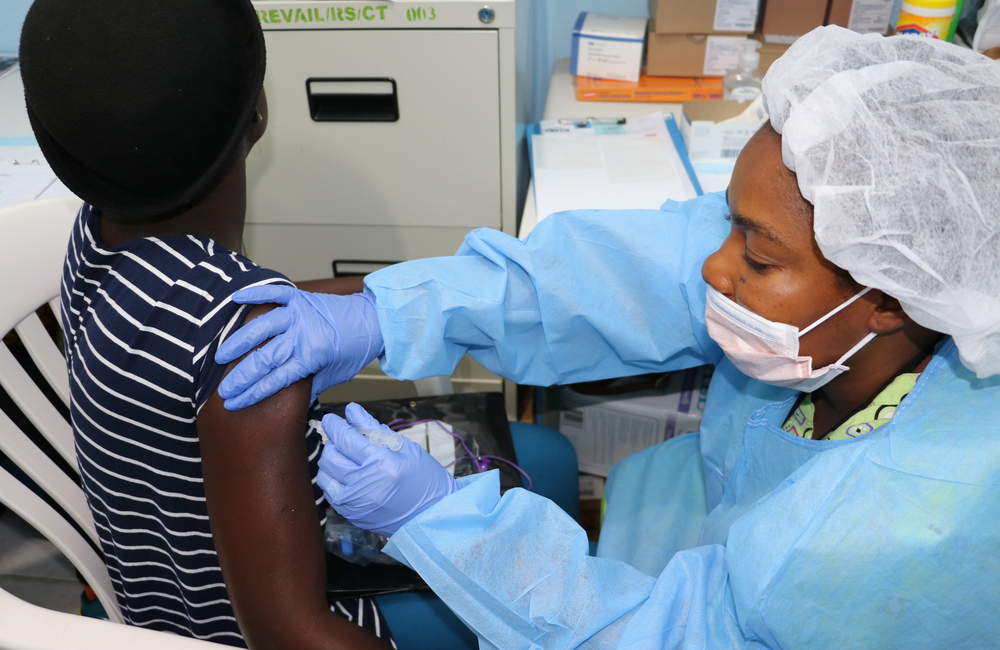
Screening women with HIV for cervical cancer every three years, along with high coverage of HPV vaccination in girls and young women with HIV will be necessary in countries with high rates of HIV to achieve ambitious global targets for the elimination of cervical cancer by 2120, a modelling study published in eClinical Medicine concludes.
In 2020, the World Health Organization (WHO) set three targets to support the elimination of cervical cancer as a public health problem. Countries should aim to vaccinate 90% of girls against HPV by the age of 15, ensure that 70% of women receive two screening tests (including testing for HPV) at the ages of 35 and 45, and provide treatment for 90% of women with precancerous lesions or cervical cancer.
The targets were set based on modelling of various interventions in 78 low- and middle-income countries. However, this modelling didn’t consider HIV prevalence, the uptake of antiretroviral treatment and rates of male circumcision, each of which could affect the incidence of cervical cancer.
HIV can increase the risk of developing cervical cancer after acquiring HPV. However, by reducing HIV transmission, suppressing HIV replication, and restoring the immune system, antiretroviral treatment reduces the incidence of cervical cancer. Male circumcision protects men and their sexual partners against HPV acquisition, reducing the prevalence of HPV in women.
To investigate the impact of HIV on progress towards WHO targets for elimination, an international modelling consortium developed three models of HPV transmission and cervical cancer progression. The consortium assessed whether different vaccination and screening protocols were needed for women with HIV. They used these models to assess the impact of a variety of prevention and screening strategies on cervical cancer incidence and the time to elimination of cervical cancer as a public health problem. The models were calibrated by demographics, HIV, HPV and cervical cancer prevalence over time in South Africa.
The modelling consortium chose to focus on South Africa because of its high HIV prevalence and the availability of data from a national cervical cancer screening programme that began in 2000. Findings from South Africa can be used to guide the development of strategies for cervical cancer elimination in other countries in southern and eastern Africa with high HIV prevalence.
The models compared the impact of three scenarios for HPV vaccination and cervical cancer screening in the whole population compared to no vaccination and screening rates of 13% or below:
- Vaccination of 9–14-year-old girls
- Vaccination of 9–14-year-old girls plus one lifetime screening for cervical cancer of all women aged 35 years
- Vaccination of 9–14-year-old girls plus two lifetime screenings for cervical cancer of all women aged 35 years and 45 years
The models also compared the impact if three scenarios for women and girls with HIV were implemented in addition to the whole-population scenarios:
- Vaccination of young women with HIV aged 15-24
- Cervical cancer screening every three years for women with HIV aged 24-49
- Vaccination of young women with HIV aged 15-24 and cervical cancer screening every three years for women with HIV aged 24-49
The models showed that the whole-population strategies would reduce the incidence of cervical cancer by 83% to 87% by 2120. But in the short term, vaccination of girls plus two lifetime screens achieved a greater reduction in incidence than vaccination alone by 2045 (49% vs 15%). When compared to vaccination alone, the time taken to halve the incidence of cervical cancer was accelerated by 18 years when two lifetime screens were carried out in addition to vaccination. Vaccination plus two screens would achieve elimination (reduction of incidence below 4 cases per 100,000) by 2093. In contrast, vaccination alone did not achieve elimination in all models.
Over 25 years, vaccination alone would avert 4% of cervical cancer cases. Adding two lifetime screens would avert 28% of cases over the same period.
In women living with HIV, the most effective whole-population strategy resulted in reductions in cervical cancer of between 75% to 92% by 2120, but they did not achieve elimination of cervical cancer within 100 years. Adding enhanced vaccination for women living with HIV to the most effective whole-population strategy resulted in modest additional reductions in cervical cancer incidence but did not accelerate elimination, either in the whole population or in women living with HIV.
"Vaccination plus two screens would achieve elimination by 2093, but vaccination alone did not achieve elimination in all models."
Adding more frequent screening to the most effective whole-population strategy reduced cervical cancer incidence among women with HIV by 40% by 2045 and by 27% by 2120. It also accelerated the elimination of cervical cancer in women with HIV by 10-20 years in the models but to less ambitious targets than in the whole-population models (85% reduction in incidence rather than reaching less than four cases per 100,000).
The study authors say that achieving elimination of cervical cancer in women living with HIV will be challenging in South Africa and that high vaccination coverage and screening of women living with HIV every three years will be essential for elimination. They conclude that integrating cervical cancer screening and treatment with HIV services that have achieved high antiretroviral treatment coverage “may spur efficiencies and simplify service delivery.”
Boily MC et al. Estimating the effect of HIV on cervical cancer elimination in South Africa: comparative modelling of the impact of vaccination and screening. eClinical Medicine 54: 101754, published online 17 November 2022.
DOI: https://doi.org/10.1016/j.eclinm.2022.101754
Full image credit: Ebola Vaccine Study in West Africa. Image by NIAID. Available at www.flickr.com/photos/niaid/33085205143/ under a Creative Commons licence CC BY 2.0.
